
Return To Deck Specialists Inc Home Page
|
Dirt, grime, mud, pet hair etc: Keeping Your deck clean and very important in reducing other problems like mold and mildew. Simply blowing off the deck or sweeping it once in a while will greatly reduce dirt and grime on your deck and also help to keep the decking gaps open for drainage. Really dirty decks can be cleaned as you would a car, a good bucket with soapy water (detergent) and a brush and a hose will do wonders on any kind of deck be it Treated wood, Ipe, composite or cellular PVC. Clean decks drain better, are less likely to promote mold growth, and less likely damaged from scratching. Mold and Mildew:
Often confused, and really very similar, in fact mildew is a form of
mold. Both are different forms of fungi
There are sealers designed to help prevent the growth of mold and mildew and it is important to keep gaps in decking clean and clear to assist in drainage (remember mold likes it damp). Also keep in mind bleach may lighten the area(s) you are working on. It is probably a good idea to lightly mist the entire deck with water first, then apply the bleach with a sprayer and avoid puddling or dripping and work out from the bad areas. You may still get some lighter areas after you are finished but they should even out after some time in the sun. There are also non bleach enzyme mold and mildew cleaners and products aimed only at composites like Corte-clean which may be effective at combating mold and mildew though not likely as effective as harsher bleach and bleach products. Grease and oil stains, miscellaneous stains, sealer overspray:
Dilute with water (but keep it pretty strong) spray it on with a pump sprayer or spray bottle give it a little time to activate then work it in with a stiff brush. Rinse off with hose and usually you are all set. we have even had great success at removing dried sealer overspray, normally a near impossibility, bear in mind that some stubborn stains may require a few applications. This should hold true will all deck materials. Tannin and leave stains: Seem to work themselves out when left to the sun. May take quite a while and you may get some quicker results from deck brighteners (phosphoric acid), We recommend keeping your deck clean of leaves as much as possible, cleaning the deck with soap(your favorite dish detergent) , water and maybe a little bleach and let the sun take care of the rest. True for all deck materials. Lumber marks: unfortunately , many deck materials come with large dark lumber marks or stamps. With wood decks we can sand off these marks and blend in the area, after sealing and sometime in the sun these areas become unnoticeable. With composites and cellular’s sanding is not an option. Many times these marks will fade rapidly or can helped along with cleaners or denatured alcohol.
Scratches, gouges, scuffs and abrasions:
with wood decks (Ipe, or treated) these issues, and even very stubborn Colored chalk (chalk lines): Colored chalk especially red can be difficult to remove, as only white chalk is not permanent . With wood deck sanding will eliminate these marks, but greater care on composite decks must be taken to avoid long lasting chalk stains.
Pressure Washing:
|
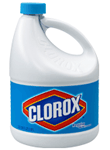 and like the same conditions. Both thrive in warm, moist locations and
spread thru spore colonies. Mold can be black, green, red or blue while
Mildew is usually gray or white. Mold and Mildew can anchor to almost
any surface but obviously the more porous surface the better the anchor.
Both can be very tenacious and difficult to complete eliminate. There is
much controversy about bleach’s effectiveness in eliminating mold and
mildew, but
and like the same conditions. Both thrive in warm, moist locations and
spread thru spore colonies. Mold can be black, green, red or blue while
Mildew is usually gray or white. Mold and Mildew can anchor to almost
any surface but obviously the more porous surface the better the anchor.
Both can be very tenacious and difficult to complete eliminate. There is
much controversy about bleach’s effectiveness in eliminating mold and
mildew, but
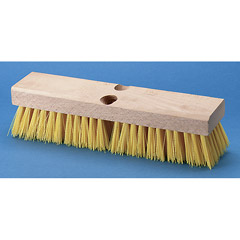 the
general consensus is that bleach works as well as anything at killing
mold and mildew, but, You must work at removing the “roots” of the mold
or mildew after the bleach has killed it. Here is where some old fashion
elbow grease come in, as it is imperative to scrub the area after you
have soaked it with a strong bleach solution. You may also be able to
carefully pressure wash the area after coating, but caution should be
exercised not to damage softer deck materials. It may be necessary to
repeat this procedure to better yours odds at success. Also, it would be
a good idea to do this on a sunny day and leave yourself drying time, as
not to leave a moist environment for the mold and mildew to quickly
recover or regrow.
the
general consensus is that bleach works as well as anything at killing
mold and mildew, but, You must work at removing the “roots” of the mold
or mildew after the bleach has killed it. Here is where some old fashion
elbow grease come in, as it is imperative to scrub the area after you
have soaked it with a strong bleach solution. You may also be able to
carefully pressure wash the area after coating, but caution should be
exercised not to damage softer deck materials. It may be necessary to
repeat this procedure to better yours odds at success. Also, it would be
a good idea to do this on a sunny day and leave yourself drying time, as
not to leave a moist environment for the mold and mildew to quickly
recover or regrow. 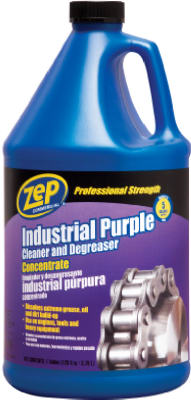 We
have found Zep industrial purple cleaner and degreaser to work wonders
with these and many more otherwise difficult to remove substances.
We
have found Zep industrial purple cleaner and degreaser to work wonders
with these and many more otherwise difficult to remove substances.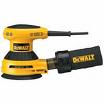 stains, burns etc. can be blended in by sanding.
stains, burns etc. can be blended in by sanding. 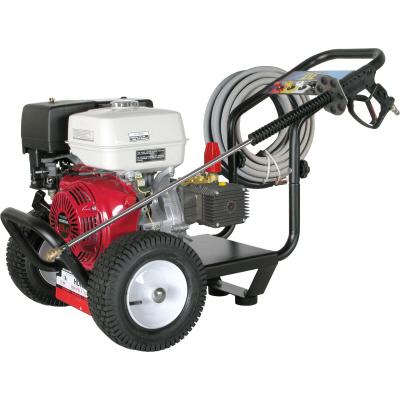 OK,
not everyone wants to get down and dirty and scrub their deck by hand.
Pressure washers make quick work of it and can't be denied as time
savers. The problem is that pressure washers can do damage if not
carefully handled. There are pressure washers available delivering
upwards of 3000 PSI and that much concentrated force can easily dig in
or gouge softer deck materials. Really, using some chemicals first you
should only need a 1500-1600 PSI washer which will greatly reduce the
chance of damaging your deck, but even still it is important to keep the
spray fan moving and overlap or feather your strokes carefully trying not get to close
or stay in one spot to long. Remember also to let your cleaning solution have
a chance to work before you start pressure washing. Again allow drying
time when the sun is still high if possible to maximize cleaning
benefits.
OK,
not everyone wants to get down and dirty and scrub their deck by hand.
Pressure washers make quick work of it and can't be denied as time
savers. The problem is that pressure washers can do damage if not
carefully handled. There are pressure washers available delivering
upwards of 3000 PSI and that much concentrated force can easily dig in
or gouge softer deck materials. Really, using some chemicals first you
should only need a 1500-1600 PSI washer which will greatly reduce the
chance of damaging your deck, but even still it is important to keep the
spray fan moving and overlap or feather your strokes carefully trying not get to close
or stay in one spot to long. Remember also to let your cleaning solution have
a chance to work before you start pressure washing. Again allow drying
time when the sun is still high if possible to maximize cleaning
benefits.